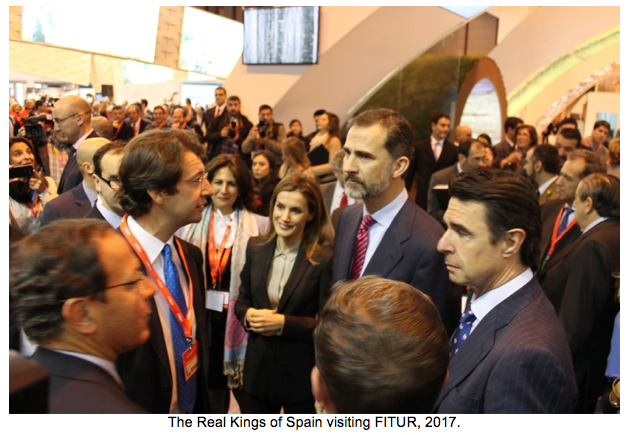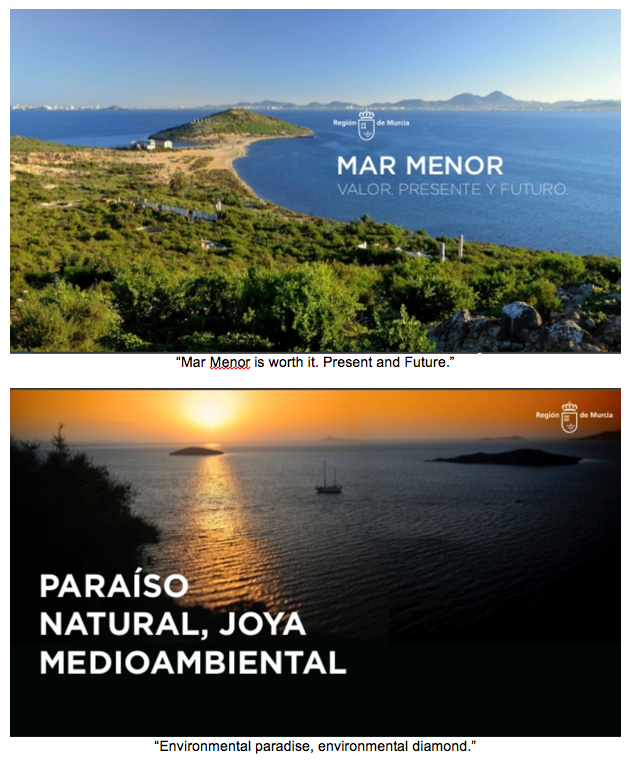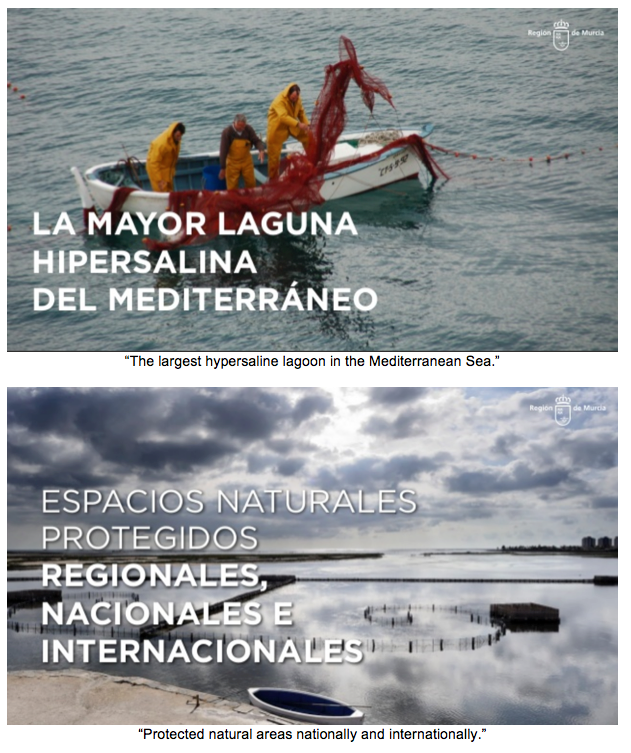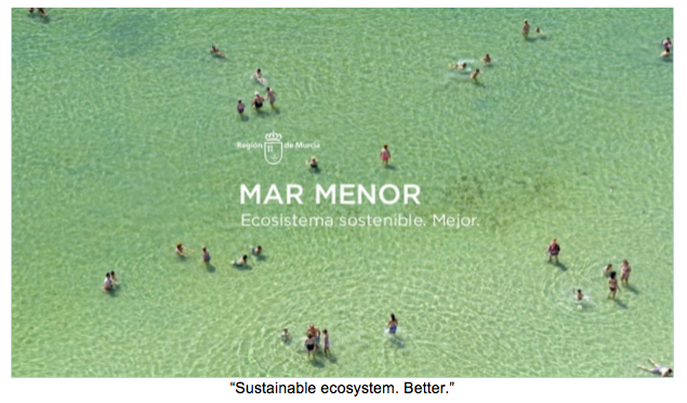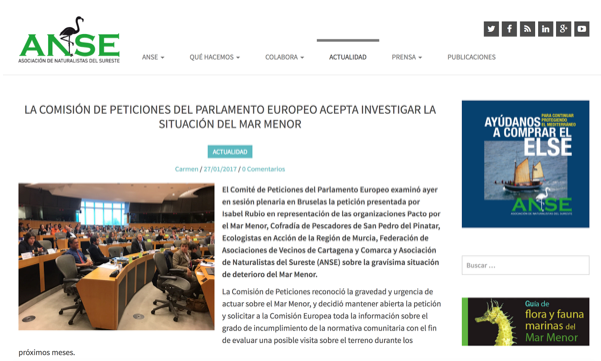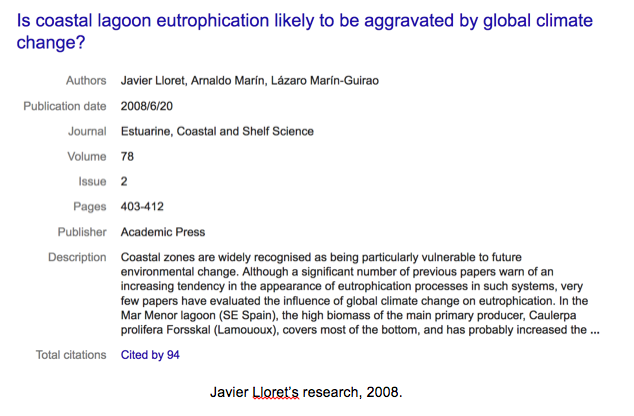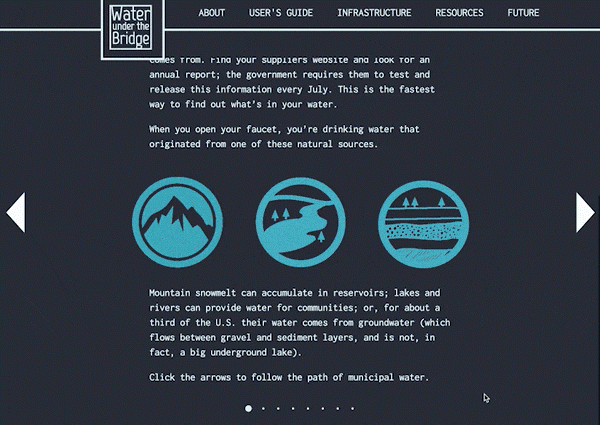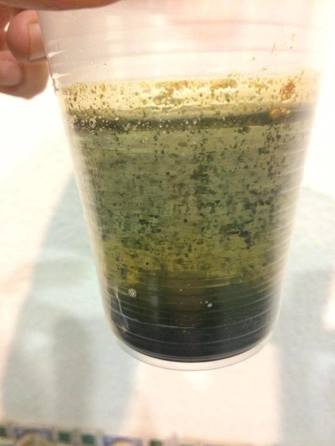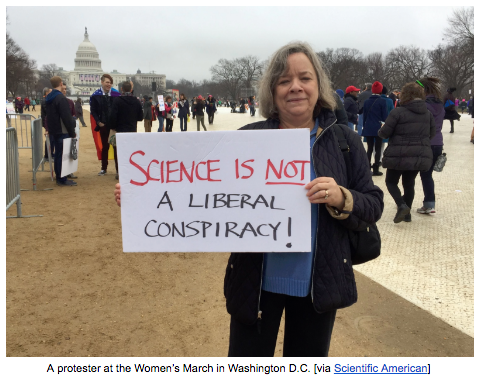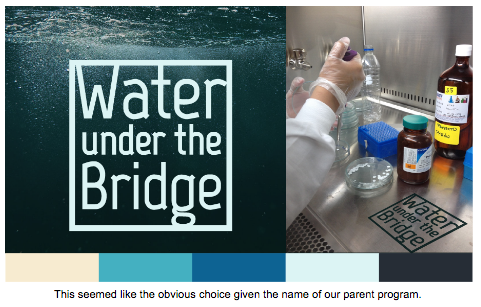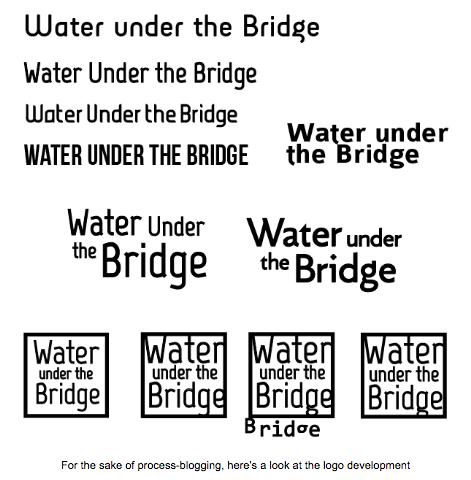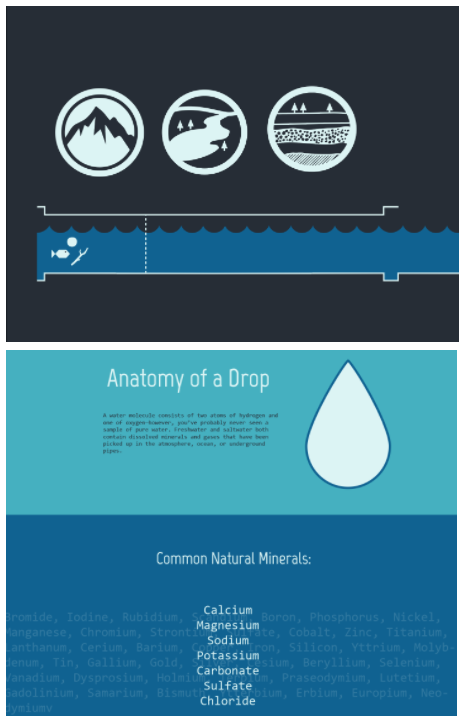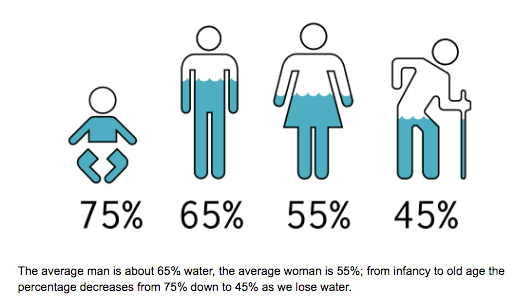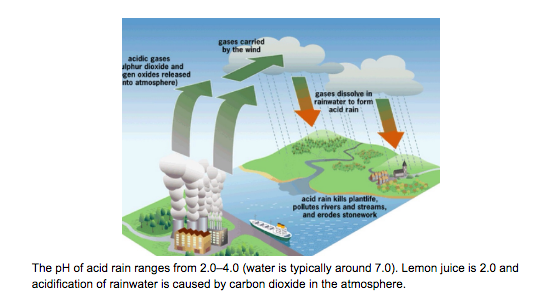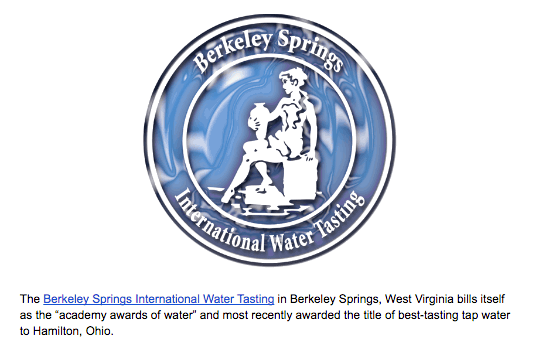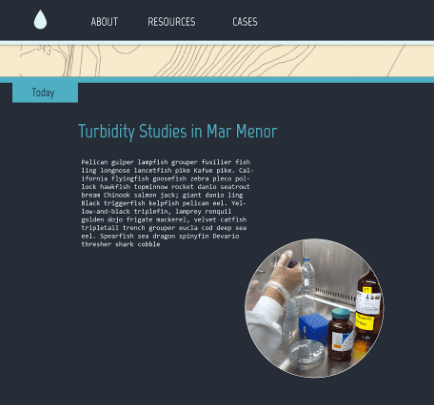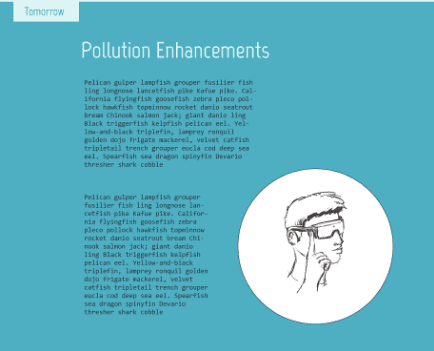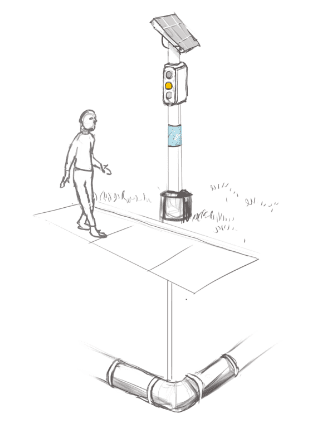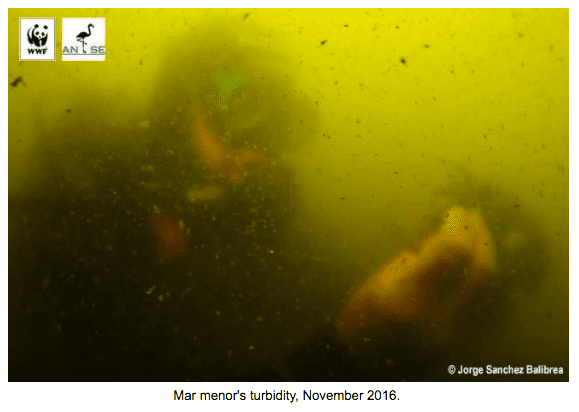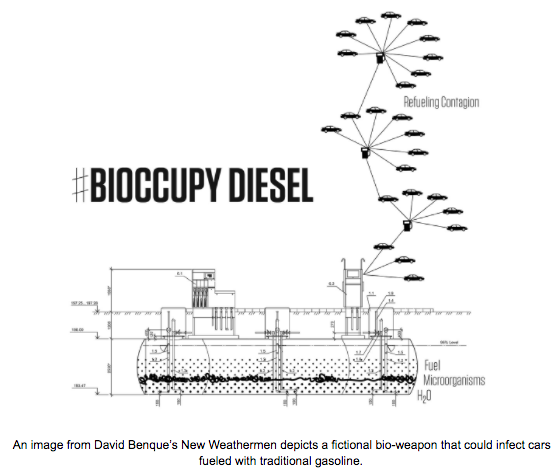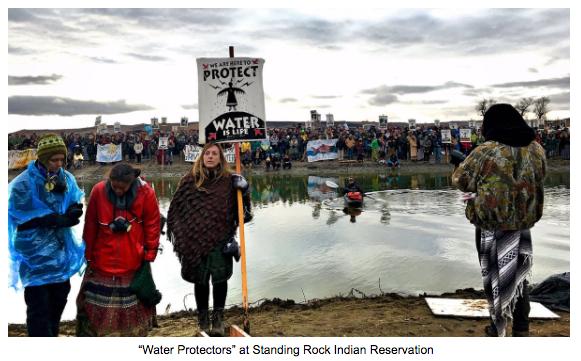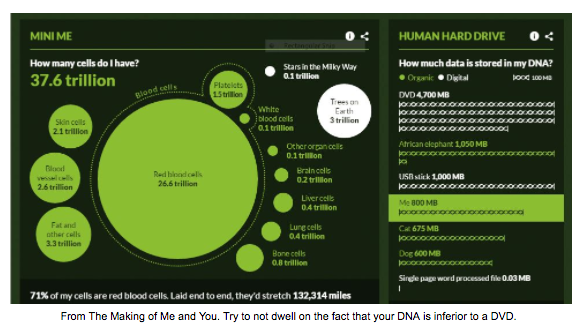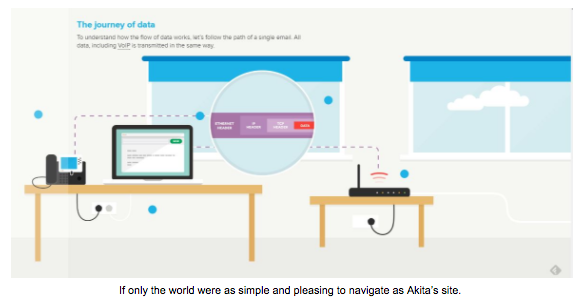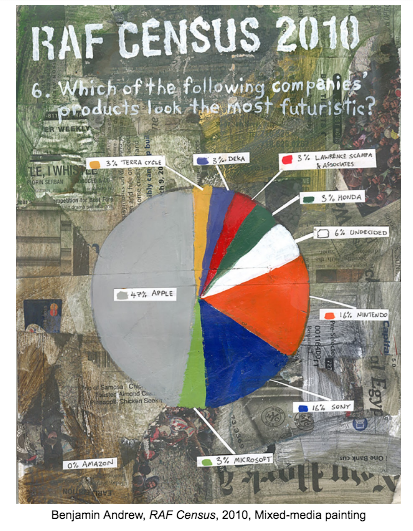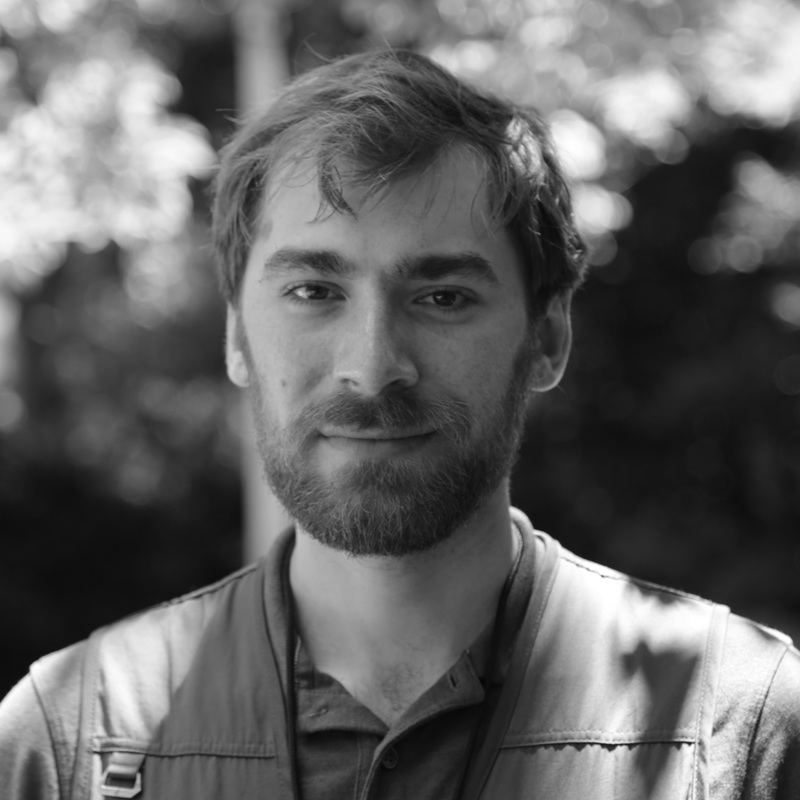|
Ben's update The website is up! I’ve emerged from a long weekend of rendering 3D models, coordinating media queries, and trying to remember my FTP password. We still have some additional content to add; some of it might be up by the time this is posted, and other content will likely be added in the coming weeks (and months?). This project began as an open-ended conversation across the Atlantic, and that’s more or less how we’re wrapping it up. The website is part educational tool, part call-to-action, and part future imagineering. It leans a little harder towards the educational angle, and the forthcoming material will definately focus more on speculative design—the part of the project that most resembles visual art. As it is, it’s been a great design challenge, and there is a wealth of information collected among all the links for further learning. There’s a this impressive database of laboratories willing to analyze your water (thanks EPA!), this online tool for finding your local watershed (thanks EPA!), and this immersive website for learning more about your water’s source and contents (thanks… Pur water filters). Our site has an animated overview of municipal water treatment, and a crash course on fracking—which continues to be a contentious issue here in Pennsylvania. As I wrote a couple weeks ago, science education has been a surprisingly big issue in the U.S. lately, with a science march of Washington and a national focus of media literacy and fact-checking. That said, I think the website would grow to include more interactive tools, and ways to connect people on issues relating to water. In the first two weeks of President Trump’s administration, it’s been exciting to see the birth of new web platforms like Indivisible, Swing Left, 5 Calls, WTF Just happened today, and myriad other ways to “Code Against Trump.” 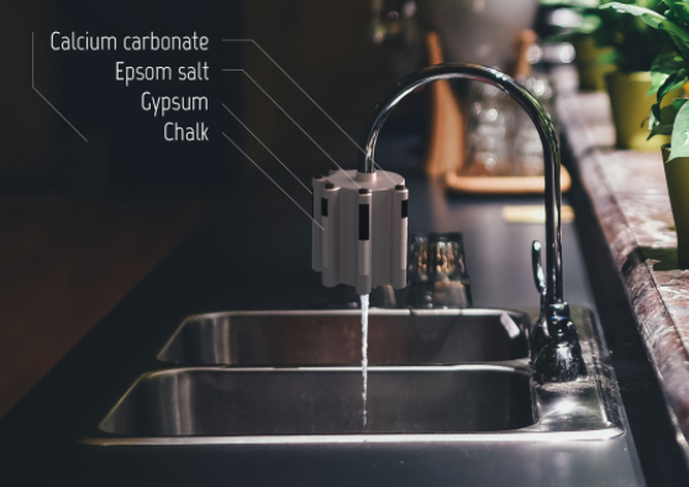 Paz and I have briefly mentioned the idea of speculative design, and how we were approaching the study of water science though imagining alternative technologies or experiences. With the launch of the website, I put together some concept art for one such design: a water profiler that could be used to add minerals to your water (to supplement the more traditional approach of removing contents). The gadget is meant to be read as a sketch, and as such, I’m sure there’s a better way to attach such a device to your plumbing, but the mere idea of hacking your tap recasts water as an interactive recipe and draws attention to the invisible components of something we take for granted. I’ve got at least one more piece of speculative water technology to post, and I believe Paz will have some additional content to add soon. It’s been tough collaborating online, but the residency has provided an opportunity to research and write about topics outside my usual purview. I’m excited to see what the other teams produced, and while I’ve done my best to keep up with their blogs, I look forward to reading them at length now that we’ve reached the end of the program.
0 Comments
Paz's update This 2017 year, Mar Menor’s landscape has been present as an “idyllic tourist destination” at Fitur, the International Tourism Trade Fair, that celebrates its 37th staging from January 18 to January 22, 2017. FITUR is a global meeting point for tourism professionals and the leading trade fair for inbound and outbound Ibero American markets. The Minister of Industry, Tourism, Enterprise and Innovation, Juan Carlos Ruiz, greeted at the stand of the Region of Murcia to their Majesties the Kings of Spain, who this morning officially inaugurated the Tourism Fair accompanied by Minister José Manuel Soria. The following pictures represent how Mar Menor was shown in this tourism trade fair: I’m in touch with an environmental organization called ANSE working on the Mar Menor area close to scientists and they are going to give me more information about the quality of this lagoon. I was also into a conversation with an environmental scientist working at the Mar Menor, but she can not show me some scientific tests because they will be published. “The Committee on Petitions of the European Parliament examined yesterday in plenary meeting in Brussels the petition presented by Isabel Rubio representing the organizations Pact for the Mar Menor, Fishermen's Guild of San Pedro del Pinatar, Ecologists in Action of the Region of Murcia, Federation Of Associations of Neighbors of Cartagena and Region and Association of Naturalists of the Southeast (ANSE) on the very serious deterioration situation of the Mar Menor.” I also have to point out, that a researcher at the University of Murcia published nine years ago a work that accurately anticipated the collapse of the lagoon, a friend of mine, Javier Lloret researcher at the Department of Ecology and Hydrology. Ben's update This week Paz has some fun photos and news from her work studying the Mediterranean lagoon of Mar Menor. I'll let her explain what's going on there, but the slick promotional photos used to encourage tourism definitely contribute to the popular disregard for environmental science and health—If it looks pretty, who cares? I'm planning on writing a parallel "case study" about Pennsylvania and it's ongoing struggle with fracking, but it will probably be more in the style of armchair journalism than what Paz is doing. Our website will start to fill in some blanks within our popular understanding of water. I won't be contributing any new discoveries, but I hope my research will be accessible enough that more people can begin to ask questions about their environment. I'll be launching the site next week, though it's likely that we'll add additional content later (deadlines, am I right?). To tide things over until then here's a peek at an animated guide I made about municipal water supplies. Did you know that 86% of people in the United States get their water from a municipal water distributor? For any designers out there, the site is based around the FullPage.js plugin (which I've found to wonderfully customizable), and is mostly a full-width vertical layout, but adapts to a horizontal layout for this page to show the progression of water through the pipes. The animations are simple CSS transitions that are triggered by Javascript.
Ben's update We’ve received over thirty responses to our online survey, which might not be enough to establish a credible scientific perspective, but it’s enough to provide an idea of what people know—and don’t know—about water. We’ll be pulling quotes from the responses to include in our forthcoming website. While I’ve been designing responsive navigation menus and styling the skeleton of our website, Paz has been busy exploring the environs of Mar Menor. She is planning an “alternative touristic walk” of the region, that will highlight local pollution and environmental threats from a biological perspective. I’m hoping to translate that experience to the website for those of us in the United States. As you can see below, the water in Mar Menor is extremely gross (to use the technical term), and demonstrates the high turbidity of the lagoon that Paz is studying through micro-biology. Meanwhile in the U.S., the new administration has added alternative facts to the ever-evolving lexicon of bullshiting, the Environmental Protection Agency faces debilitating budget cuts, and protest signs proclaim “Facts matter” and “Science is not a liberal conspiracy.” All this underscores the need for science education, and particularly the need to make it cool. Fortunately we have Neil deGrasee Tyson to put science-skeptics in their place while remaining the coolest person on the planet. One of the design choices I’m currently faced with is how close to stick to mainstream design trends in web design. As an online project, our site needs to be accessible to people on mobile devices, and clearly communicate a variety of information. If a user can’t figure out what they’re looking at or how to advance to the next page, they will probably just click over to Facebook and avoid learning anything about water chemistry or microbiology. On the other hand, we’re artists (or sciartists?) and the website should appear somewhat more like a creative visual experience than your average portfolio site.
I’m aiming to have something online by the first week of February (the nominal end to our residency and weekly blog posts), but I suspect we’ll continue to add content after that as it’s completed. We also finally decided on a name for the project: Ben’s udpate The responses are starting to come in for our online survey about common water knowledge, but we need more! Take a minute and go fill out our survey! We’re putting together a bunch of things for the website besides the survey results, but the data will help establish a picture of what people know about their water and how they live. For example, there is currently a dead heat 50% split between folks that use water filters and those who don’t. I’m guessing that SciArt readers are more educated than most about their water, but many of the responses still reflect a lack of knowledge about where water comes from. Here’s one representative response: “There's probably an aquifer [or] sources from nearby mountains, or the groundwater. I don't really know.” There is also a trend of ambiguity in how people describe the taste of their water: “Kind of mineraly and clean.” “Maybe a little mineral-ly” “Slight mineral/gravel-ish taste” In other news, we’re entering crunch time on the website, so I’ve been working on more mockups in Illustrator and building up the files for the website. Our goal is to combine a variety of different topics under the umbrella of our website, including some basic educational information, resources for DIY activism and scientific water analysis, and imaginative designs for how people might engage with their water differently. Here’s a rough outline for the sake of blog-transparency:
And here are some various graphics and layouts I’m working on: The website only has a few pages, and will have a lot of unique graphics and layouts, so I’m just coding a few HTML pages from scratch. For anyone interested, I’m using SASS, which is a CSS-compiler that makes it easy to update overall styles for the whole site and produces very minified code (Prepos is an easy application for running the compiling).
I always enjoy building sites this way and defining the right declarations for colors, fonts, layout and such. I’m using a console font for most of the text, which I think gives it a down-to-business edginess appropriate for an activist platform. Some of the flat icons and backgrounds above feel a little too commercial, so I will try to make things look weirder as I go. Ben’s update
First of all… Click HERE to take a quick survey and contribute to our project! Paz and I are going to include some of the data and quotes collected from the survey in our online hub for speculative water activism. You can choose to stay anonymous, or only contribute your answers to multiple choice questions. Other than finally pulling the survey together, this week has been devoted to researching and writing content to fill out the plan I described last week. I spent a while this weekend Googling and writing about basic water science. Even after a couple months of discussing microbiology and water infrastructure, it’s still kind of amazing how little I know about such an essential part of life. Do you know how your water gets to your faucet? Wait, don’t answer here, go click on the survey and tell me there. Some miscellania: Ben’s post As usual, the ideas start flowing once there's actually something to look at outside of your own head. I started outlining a design theme for the hypothetical online activist platform that Paz and I are cooking up. After I settled on a color scheme and font choice, I mocked up some possible layouts for the website in Illustrator; this forced me to consider how to organize and present the myriad ecological ideas we’ve been throwing around for the past couple months. I imagined the website featuring a few different “cases” (or “experiments,” “tactics,” or the like) so Paz and I can each present a variety o research. One subject will be Mar Menor and the turbidity goggles Paz described last week, but I've got some other ideas too. I hit upon the idea of dividing each “case” into two sections: a current-day rundown of practical resources and educational graphics, and a more speculative take on how that content might be used in the future. For Mar Menor, this would take the appearance of a post about Paz’s actual research into biomarkers and pollution, followed by whatever object or experiments result from her cyborg-vision tinkering. Once I wrote out the essential content I wanted to include (basic water chemistry, fracking, testing resources, etc.), I found myself in the enjoyable position of brainstorming SciFi solutions and imaginary technology―in other words, my wheelhouse. I'll parcel out these ideas in the coming weeks, but here’s one that I particularly like: a lamppost-style alert system that monitors local water supplies with color-coded lights. Remember, these speculative designs don't have to be engineered to pass the scrutiny of real world investors (though thinking he details through is often entertaining). Speculative design can lead to concrete innovation and unexpected ideas through outrageous what-if scenarios.
The public alert system outline above draws attention to the typically overlooked water infrastructure by erecting a public marker that directly connects to a common resource. The structure includes a transparent window for passersby to clearly see otherwise hidden infrastructure. Paz's update "Be water my friend, be water.” “Estoy como pez en el agua.” (I’m like a fish in the water) “No se calla ni debajo del agua.” (It is not silent underwater) “Más claro que el agua.” (Cleaner than water) “Donde llega el agua hay riqueza y donde no, pobreza.” (Where the water comes, no wealth and no poverty) “Se ahoga en un vaso de agua.” (Drown in a glass of water) “Nadar entre dos aguas.” (Swim between two waters) “Cuando el río suena, agua lleva.” (If the river makes a noise it’s because water is running) *Translated with Google Can you imagine being able to see the pollution of the sea in every place you look? These “alternative touristic walks” could give us an alternative way to show environmental data and be aware about the fact that the Mar Menor (as others) is one step away from collapse by pollution. Symptomatic proliferation of toxic algae has led the Ministry of Health of Murcia in Spain to ask the Agriculture and Environment (both governed by the PP) an urgent and constant monitoring. But the reaction comes 18 years after the first warnings. The situation is limit, according to the Spanish Institute of Oceanography and the University. The Prosecutor's Office has opened an investigation into the actions of the Hydrographic Confederation of Segura, the Executive, farmers and municipalities. It is not just a problem of water turbidity, detected in 40 beaches of the Mar Menor. The massive presence of phytoplankton is a symptom of severe degeneration of a unique ecosystem included in the Ramsar Convention on Wetlands of International Importance (the Deposited Unesco) and protected as a natural area and area of special interest. The causes of high pollution are manifold. The principal, according to the health report, is eutrophication (accumulation of organic waste) produced by the discharge of water and urban and agricultural waste, seepage from underground rich in nitrates, increasing aquaculture, action lines in the maritime environment, climate change and other natural sources. These “alternative touristic walks” plus techno-biological devices could help citizens to embrace different and important problems on water pollution. Ben's update
This week we made some real progress toward realizing our project: I finished a draft of the water survey that I’ve mentioned previously, Paz started sketching out an invention that would allow users to detect water turbidity, and I read an entire list of idioms having to do with water. The latter was in hopes of arriving on a title for our project, which it may be too early for, but as our online activist resource is starting to coalesce, I thought giving it a name might help us flesh it out. The impressive amount of common phrases that mention water is surely a testament to its universal importance. For obvious reasons, the phrase “water under the bridge” lept out at me for its connection to SciArt’s Bridge, but I’m not sure it’s ho-hum sentiment is appropriate for an activist program. Here are some more idioms to contemplate (maybe Paz can offer some Spanish phrases): “A fish out of water” “Blood is thicker than water” “Come hell or high water” “Pour oil on troubled waters” “Still waters run deep” “You can lead a horse to water, but you can’t make it drink.” I’m still envisioning a website that combines interactive infographics, speculative design, and practical resources for anyone concerned about water safety. Paz doing some in-depth research into Mar Menor, but I think her localized work in Southern Spain can be one case study or a larger picture. Here in the United States, the EPA just declared that fracking is a definitive risk to drinking water, so maybe I’ll compose some research into that (it’s certainly a lingering specter here in central Pennsylvania). I think Paz and I both have a tendency to lean into the dystopian aspects of our work - the threat of polluted wastelands is integral to any environmentalist campaign, and as artists it’s simply a lot of fun to imagine the technology and culture of the future. In emails this week, Paz and I threw around the idea of “alternative touristic walks” and how tourism might exist in those apocalyptic wastelands, or else be used to reveal current-day threats. Paz imagined techno-biological devices that could allow tourists to literally see water pollution and environmental data, which recasts the classic sightseer as a sort of augmented reality cyborg. There’s much fun to be had parodying the tourism industry, but we decided our project should be billed as an activist-educational group (which it is) as opposed to some fictional tourism or technology group. Even if some of the technology or ideas we depict are theoretical, we’re grounding the project in actual data and action steps (which have been the subjects of previous blog posts). I recently wrote an article on Bmore Art about the role of fictive art today (i.e. art that blends fact and fiction in experimental narratives), and this project should provide opportunities to find the right balance between deception and sincerity. Paz’s update During this week I was having a conversation with an environmentalist from Oceanographic Institute, working on the Mar Menor lagoon in Murcia, Spain, where they have just published a new paper which explains the results of a study into the condition of the marine situation in the Mar Menor, which show that in spite of efforts to prevent further nitrates – the leaching of agricultural fertilizers into the sea and the excess nitrates present to fertilize yields– following into the water that the meadows of sea grass and seaweed have diminished by 85% over the last two years. Preventing agricultural waters from flowing into this sea is essential and must undergo a profound restructuring, scientists affirmed. This research has lot of controversy, having in mind about government’s statement, as the regional minister for water, agriculture and environment that said this is an "alarmistic theory" and cut the agricultural activity could cost thousands of jobs as well as they are related to the tourism sector, hotels, hostelry, etc. Scientists working at the Mar Menor also explain the problem with the turbidity of the water and the limitation of the marine meadows to photosynthesis and growth. A big problem caused by, as this article explains, the leaching of agricultural fertilizers into the sea and the excess nitrates present to fertilize yields. After this information, and thinking on our project, we examined some artworks from David Benque’s THE NEW WEATHERMEN MANIFESTO, For a new symbiotic world order: “We the Weathermen have listened for too long, it is time for action. Politicians, journalists and ‘green’ activists keep on telling us which way the wind blows. In the Anthropocene, the only question is; which way do we want the wind to blow?” In the face of impending climate crisis, environmentalists are becoming increasingly polarised in their ideas and beliefs. Bio-Conservatives argue for a curbing of consumption, a return to Nature and are suspicious of new technologies. Techno-Progressives on the other hand adopt an optimistic trust in progress, and promise to solve problems with newer and better technologies. We are thinking about how to visualize some of this water problems in the art field. One of the ideas is DIYBIO or Biopunk movements that could help us, as artists to show and provide information on water pollution to citizens. Having into account Ben’s last post where he created a survey; questions about water pollution to the citizens, we are also having in mind the idea of mapping perhaps turbidity of the water and its relationship with pollution. Ben’s update Mar Menor is a real hotbed of ecological pollution, farming industries, and tourism. It’s a fascinating case study that brings together myriad problems faced around the world (it’s also great to have Paz right there learning about everything that’s going on). Here in the United States, water is also falling under increased scrutiny—earlier today I saw a hand-painted #NoDAPL banner suspended over a highway in New Jersey while marches took place around the country in support of the movement. Although our project is still evolving, it seems likely to be some sort of toolkit or informative resource for combating water pollution in the future. Alongside infographics and suggestions for self-testing water, Paz is interested in designing (or at least envisioning) devices for empowering water activists. To that end, I was researching artists working in the realm of speculative design and came across David Benque’s New Weathermen project, which Paz mentioned above.
Speculative design is a broad category of work that renders ideas without worrying about feasibility. I highly recommend Anthony Duane and Fiona Raby’s Speculative Everything as a guidebook, but this type of work imagines potential technologies or behaviors as a means to shape possible futures. Benque imagines his technological fancies as “proposing deliberately radical or outrageous ideas that make the original agenda look acceptable by comparison.” Both Paz and I have made work that embraces this influence of art over reality, and I’m curious to see where this new collaboration ends up. In approaching water activism as a design problem, I think it will still be useful to launch a survey to find out how people think about their water. Maybe next week we’ll have something for you readers to contribute. Ben’s Update: I’m still drafting the online survey discussed last week, but will hopefully have it ready to send out to readers of SciArt sometime after a meeting with Paz tomorrow. At this point, I’m expecting that we’ll be producing a website that stitches together the results of our research into environmental pollutants, the hidden chemicals in our air and water, and activist strategies for folks in Spain and the United States. Both Paz and I are interested in envisioning how these issues might play out in the future, so expect some license to be taken with our proposals. I’ve made websites for several of my past projects— Quantum Tours Americana and the Foggy Bottom Microobservatory were both pseudo-fictional institutions that used graphic branding and web design to seem legitimate— but for this project, I’d like to do something more freeform and interactive. Coincidentally, I was preparing a lecture about data visualization for my class this week, and found myself researching examples of immersive educational websites. I think some of these examples will be useful as we develop our own project. Surely we can do better than the convoluted data sets provided online by national and international water researchers (see previous blog post for examples of bad design). I want to use the data collected from the survey as a jumping-off point for illustrations, videos, and speculative design, but some amount of concrete fact reportage is essential to highlighting the dangers of pollution. The BBC published The Making of Me and You earlier this year, and it’s a fantastic look at the human microbiome designed to illustrate the diverse organisms that make up the self. This seems relevant to our project of exploring chemicals and bacteria hidden in water, but it’s also a great website that frames hard science through familiar metrics like dollar-value and household goods (thanks, capitalism!). The BBC’s data-driven anatomy lesson is a little overwhelming, but each section is clearly visualized with simple shapes— it’s just hard to decide which fact to look at when there’s so many. A lot of DataViz websites simplify this by forcing users through a specific narrative, with information appearing and disappearing as you scroll. British technology firm Akita provides an elucidating look at the way information travels through the web in with their web page titled Movement of Data. It’s a great example of the full-page infographic; complete with scrollable animations and vector illustrations. It’s a fun journey but I’m not sure Paz and I will come up with a story that is as linear as the life of an email. Still, think about all those bits beaming around the world whenever you’re reading these blogs! These scrollable infographics are fairly common, but I don’t really consider them data visualization so much as illustrations. Here’s a charming infographic about why our visual communication is so effective to our primate brains, but those vector illustrations aren’t really attached to data, they’re merely sitting alongside statistics. I’m not sure yet which direction Paz and I might take, but as activist artists, I reckon it should be stranger and more radical than these examples.
One more inspiring data visualization is the immersive website Network Effect by Jonathan Harris and Greg Hochmuth. This generative head trip through human culture uses your IP address to limit your access to the site according to the average life expectancy in your country. Clicking on one the shuffling words takes you to a thematic collage of statistics and video footage that is as moving as it is headache-inducing. I don’t know if we’ll be able to put together such a rich tapestry of data, but there’s certainly enough information out there about water. According to the BBC, there’s 1,566.2 oz of it in my body alone. Ben's update Where does your water come from? One of the most stirring results of examining water contamination like the ongoing disaster in Flint, Michigan is that it reveals the innate trust in the infrastructure beneath the sink. Many people today have no idea how their cars or computers work; there’s a trust that develops when complex mechanisms appear to function well over time and most people would never seek to uncover the intricacies of their water supply unless there was a problem. After looking at the overwhelming amount of water data online (see previous), I’m thinking about gathering my own from the populace. A general poll asking people about water utilities and contamination could result in two types of responses: 1. Awareness of actual dangers and a sense of just what public knowledge contains 2. Hilarious misconceptions about reality As catalysts for art and design, both types of responses could prove useful. I’m imagining diagrams, figures, and PSA-style videos about where tap water comes from and the microscopic features it contains. Response type two could be a great hook for engaging audience in the otherwise dull minutiae of water chemistry, and for sure-fire hilarity I’d love to pose questions to children about their conceptions of water utilities. Unlike a traditional survey, these journalistic responses could be curated for specific points of interest. For an artist tackling a subject as big as water, using someone else’s ideas as a launching point would certainly help. In 2010 I designed a survey to test assumptions about how people envisioned the future: what movies are most emblematic of the coming years? What shapes and colors are futuristic? And will it be utopian or dystopian? I made paintings of the results, but only reached a few dozen people with my xeroxed questionnaire. Three years later I interviewed people throughout Baltimore as part of my project the Chronoecology Corps, collecting stories about people’s favorite memories of nature. I focused on getting them to describe in detail physical sensations like the sound of the ocean or the feeling of walking on moss in your bare feet (I was pretending to be a time traveling scientist from the future who had never experienced these things). This sort of democratic recording is important because it puts the onus on the audience to create meaningful experiences, and by recycling their stories in my own work, there’s an exponential gain in connected lives— but since I’m working with the SciArt Center now, I’m curious if I can make any future surveys more rigorous and scientific.
The National Science Foundation explains that two concerns when designing a scientific survey are sample selection and the type of question. A self-selected responder (such as someone who seeks out an online poll or calls a phone number) is likely to be biased, and unless the survey can be distributed to an extremely large audience, it’s best to develop a “representative sample” chosen randomly. If you’re familiar about your target audience, you can use “stratified” sampling to select participants from diverse sections of the population. Unsurprisingly, the NSF recommends using “objective” questions that do not imply bias or emotion. As an international collaboration between artists on both sides of the Atlantic, I’m not sure what our target audience would be for this project, but we’ll see where it goes. I’m also trying to maintain the focus on activist engagement, and wondering what audiences would provide stirring responses, who would benefit most from water safety data, and what would provide a good show for our readers. But I guess I’m biased. |
Visit our other residency group's blogs HERE
Paz Tornero is an artist, visiting professor at the University of Caldas in Colombia, researcher at the University of Murcia, Faculty of Fine Arts in Spain, and visiting fellow at the Institute of Microbiology (USFQ) in Ecuador.
Benjamin Andrew is an award-winning interdisciplinary artist, storyteller, and Instructor at Pennsylvania State University.
|


